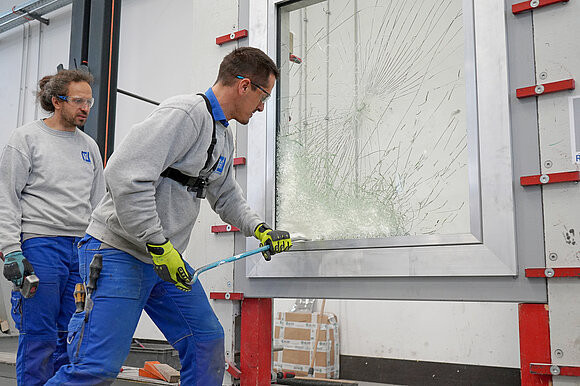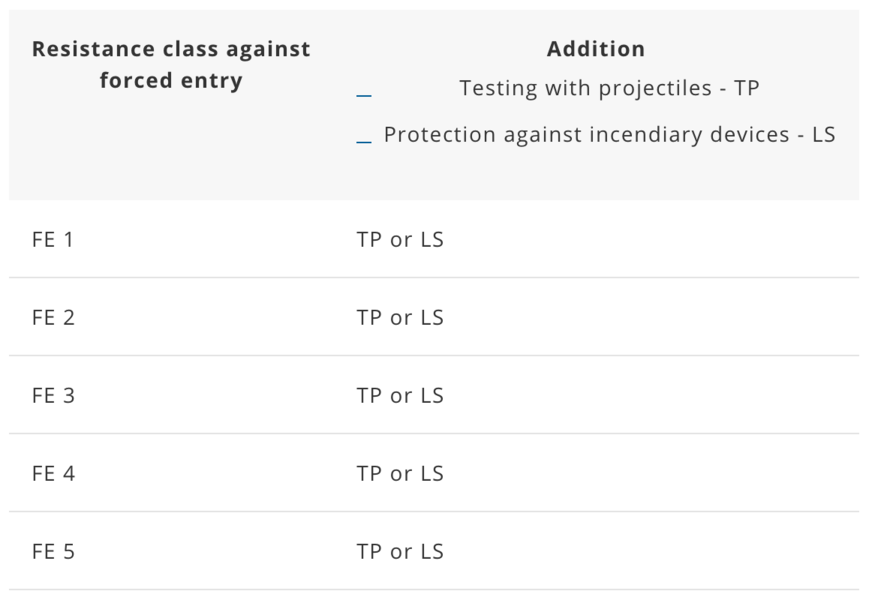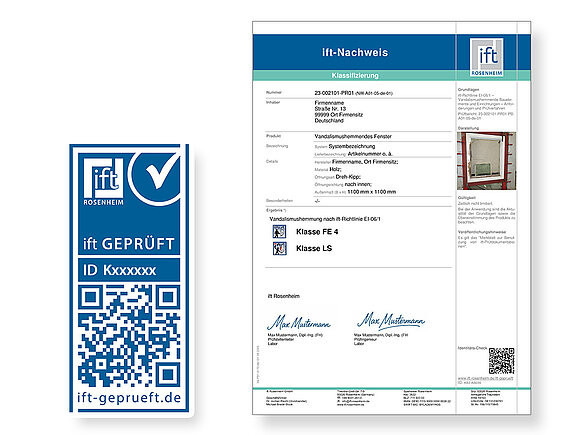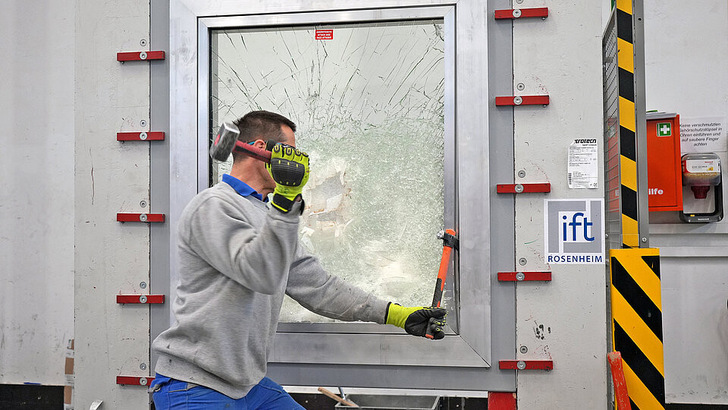Vandalism-resistant building elements are specially developed components that are resistant to direct attack and wilful destruction. In contrast to burglars, it plays a subordinate role for the perpetrators whether they are observed, filmed or prosecuted. They often act in groups from a crowd, for example at major sporting events or demonstrations.
Such components are intended for public areas and other heavily frequented or high-risk locations, such as train stations or pedestrian zones. They are used to minimize consequential damage and costs caused by vandalism in buildings or to improve the protection of the physical integrity of building users.
The ift-Guideline EL-06/1 specifies procedures for testing and classification. The basic prerequisite for the selection of suitable elements is a risk assessment/evaluation. Here, the expected group of perpetrators and the expected extent of damage are combined with the probability of occurrence.
Testable Products
- Components such as doors, gates, curtain walls, windows and fixed glazing can be tested.
- All intended components, such as frames, glazing or infilling, locks and hinges as well as all locking components, are required as part of the test specimen
- Variants with different opening types are considered and evaluated individually
Services of ift Rosenheim for Testing the Vandalism Resistance of Components
Test Sequence: Vandalism-resistant Building Elements as per ift-Guideline EL-06/1

ift Rosenheim
The resistance to vandalism is tested on a closed, locked and ready-to-use mounted element.
The test is carried out as a sequence of dynamic loading (throwing test, heavy corner) and subsequent manual testing, whereby the tool sets according to EN 1630 are extended or supplemented with additional impact and lever tools.
Dynamic Test
Attacks with projectiles such as stones or manhole covers and posts, which could be used as pile drivers, are simulated by impacts with a steel cylinder to improve reproducibility. To simulate stone throwing, the steel cylinder is fitted with an adapter tip. The number of impacts increases depending on the class.
Protected Against Fire (Liquid Safe)
During the test, the test team attempts to create a small opening in the test specimen. The test specimen must not fail.

ift Rosenheim
Failure is defined as an opening in the test specimen through which a bottle, for example, could be inserted. The measuring head Ø89 mm from EN 13126-5 is used for the assessment to verify a penetrable opening.
Manual Test (Vandalism)
Following the dynamic tests, a manual attack is carried out on the same test specimen.
Here, the test team attempts to force entry in pairs. Depending on the class, different tools are used and the test time is increased.
Power tools are not used in the manual vandalism resistance test.
In the best-case scenario, the manual test is carried out on one element. If there are several attacks due to the design, the number of test specimens may vary.

ift Rosenheim
The following properties can be tested and classified:
Classification of Vandalism Resistance as per ift-Guideline EL-06/1
Vandalism resistance (FE, Force Entry)
Degree of resistance of a component to a manual attack with the described tool sets.
Throwing tested (TP; Throwing Projectiles)
Resistance of a component to an attack with thrown projectiles (e.g. paving stones) from a short distance.
Liquid safe (LS)
Suitability of a component against the introduction of an incendiary device after an attack with tools on the side to be protected.
Certification of Vandalism-resistant Building Elements
The guideline defines test procedures and evaluation criteria that ift Rosenheim carries out for the certification and listing of products. The ift-certification and ift-listing of products is based on evidence that is recognized by ift Rosenheim and ensures that

ift Rosenheim
- products meet the criteria of the guideline,
- The manufacturer or service provider has personnel, procedures and systems in place to ensure that the product supplied complies with the guideline,
- Regular audits of the manufacturer (including tests where applicable) are carried out,
- The contract for ift-certification and ift-listing, including agreement to rectify defects, is complied with as required.
A product marked in accordance with this document must be certified by the ift-certification body in accordance with the relevant certification rules.
For more on ift Rosenheim’s services after completion of the Vandalism Resistance Test, click here and scroll down.














